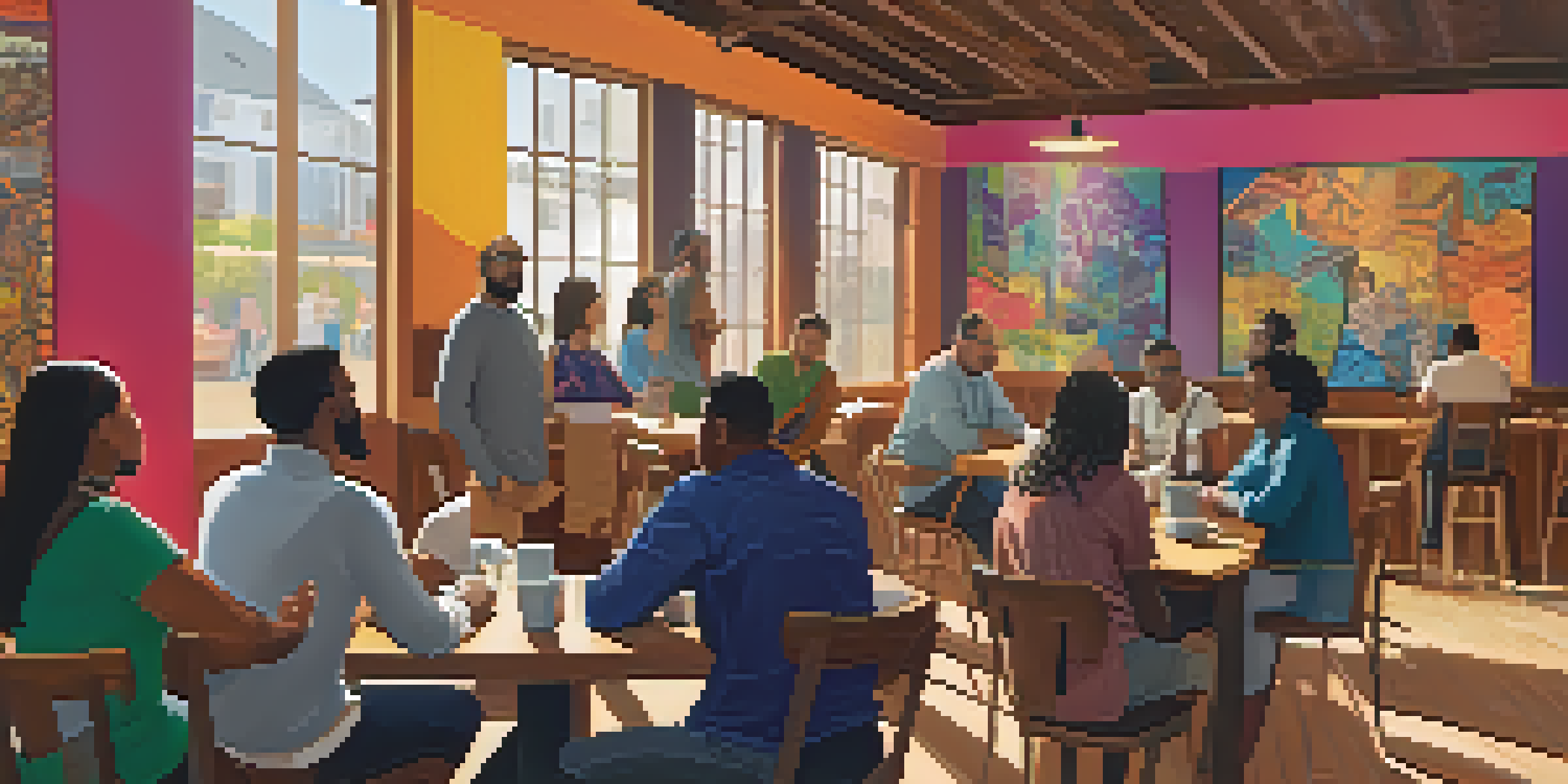NFT Governance: Balancing Power Among Community Members

Understanding NFT Governance and Its Importance
NFT governance refers to the frameworks and processes that guide decision-making within NFT communities. It’s crucial because it ensures that all voices are heard and that decisions reflect the collective interests of community members. Just like a town hall meeting where everyone has a say, effective governance helps maintain harmony and trust among participants.
The strength of the team is each individual member. The strength of each member is the team.
In the world of NFTs, governance can determine everything from project direction to how resources are allocated. If a community feels sidelined in decision-making, it can lead to discord and disengagement. Therefore, fostering a governance structure that empowers all members is key to a thriving NFT ecosystem.
Moreover, as the NFT space grows, so does the complexity of governance. Projects must balance the need for quick decision-making with the desire for community input. This delicate balance is what makes NFT governance not just important, but essential for sustainable growth.
Types of Governance Structures in NFT Communities
Different NFT projects adopt various governance structures, each with its unique advantages and challenges. Some opt for centralized governance, where a small group makes decisions, while others prefer decentralized models that allow community input. Understanding these structures is vital in determining how power is distributed among community members.

For instance, decentralized autonomous organizations (DAOs) are popular in the NFT space, enabling token holders to vote on proposals. This model promotes inclusivity and gives power back to the community. On the flip side, centralized governance can sometimes lead to faster decision-making but risks alienating community members who feel their voices aren't considered.
NFT Governance Ensures Community Input
Effective NFT governance frameworks are essential for ensuring that all community voices are heard, fostering trust and harmony.
Ultimately, the choice of governance structure can significantly impact the community's engagement and trust. It’s essential for NFT projects to carefully consider their approach to ensure that all members feel valued and empowered.
The Role of Voting in NFT Governance
Voting is a cornerstone of NFT governance, allowing community members to express their opinions and influence decisions. It can take many forms, from simple polls to complex voting systems involving weighted votes based on token ownership. This diversity in voting methods can accommodate varying community preferences and encourage participation.
In a democracy, the individual is a citizen, not a subject. The individual is an active participant, not a passive observer.
However, the effectiveness of voting hinges on clear communication and education about the issues at stake. If community members don’t fully understand the proposals, their votes may not reflect their true preferences. Therefore, providing accessible information and fostering open discussions is vital for a successful governance process.
Additionally, ensuring that the voting process is fair and transparent is crucial. Transparency helps build trust, as members can see how their votes are counted and how decisions are made. When community members feel confident in the process, they are more likely to engage actively.
Challenges in NFT Governance and Power Dynamics
One of the significant challenges in NFT governance is the potential for power imbalances. Larger token holders might wield disproportionate influence in decision-making, making it crucial to find ways to balance these dynamics. If a few individuals dominate the conversation, it can lead to disenfranchisement of smaller holders, which ultimately harms community cohesion.
To combat this issue, many projects are exploring innovative solutions, such as quadratic voting, where the cost of additional votes increases. This approach encourages broader participation and helps to mitigate the influence of wealthier members. It's similar to a voting system that levels the playing field, ensuring every member has a fair say.
Voting Shapes NFT Community Decisions
Voting is a key element in NFT governance, allowing members to influence decisions and express their preferences.
Additionally, fostering a culture of inclusivity and active participation can help address power dynamics. Encouraging smaller members to voice their opinions, perhaps through mentorship or community outreach, can create a more balanced governance structure. The goal is to create a sense of belonging for everyone involved.
Community Engagement: Building Trust and Participation
Engagement is vital in NFT governance, as it fosters a sense of community ownership and trust. When members feel involved in the decision-making process, they are more likely to invest time and resources into the project. This engagement can take various forms, from active participation in discussions to contributing ideas for future developments.
Creating platforms for open dialogue, such as forums or social media groups, can enhance engagement. These spaces allow members to share their thoughts, ask questions, and connect with each other. Just like a cozy coffee shop where friends gather to chat, these platforms can encourage collaboration and camaraderie.
Moreover, recognizing and celebrating community contributions can further strengthen bonds. Whether through shout-outs, rewards, or simply acknowledging efforts, showing appreciation can motivate members to stay engaged. It’s all about creating a vibrant community where everyone feels valued.
The Future of NFT Governance: Trends and Predictions
As the NFT landscape continues to evolve, so too will the governance models that support it. Trends indicate a shift towards more decentralized and community-driven approaches, reflecting the broader desire for transparency and inclusion. Projects that embrace these changes are likely to thrive as they align with community values.
Additionally, technological advancements such as blockchain voting systems are set to enhance governance efficiency and security. These innovations can simplify processes, making participation easier for all members. Just as online banking transformed how we manage money, blockchain technology has the potential to revolutionize how communities govern themselves.
Challenges of Power Dynamics in Governance
Addressing power imbalances among token holders is crucial for maintaining community cohesion and ensuring fair participation.
Looking ahead, it’s essential for NFT projects to stay adaptable and responsive to community needs. Listening to feedback and being willing to modify governance structures can help maintain trust and engagement. The future of NFT governance is bright, particularly for those willing to innovate and prioritize their communities.
Conclusion: The Path to Balanced NFT Governance
In conclusion, effective NFT governance is about striking the right balance between power and participation. By understanding various governance structures, embracing community engagement, and addressing challenges, projects can create an inclusive environment. This not only strengthens community ties but also enhances the longevity of the project.
As the NFT space continues to grow, the importance of governance will only increase. It’s crucial for projects to prioritize fair decision-making processes that empower all members. After all, a thriving community is built on trust, transparency, and collaboration.

Ultimately, the journey toward balanced NFT governance is ongoing. By fostering an inclusive culture and adapting to the evolving landscape, NFT communities can pave the way for a brighter, more equitable future.